Power never belongs to those in the spotlight.
"What important truth do very few people agree with you on?"
This is @peterthiel's favorite interview question and the opening line of his bestselling book Zero to One.
If you asked him this question himself, his answer might be:
In 2003, when everyone was building social networks, he chose to do data analysis for the CIA;
In 2014, when Bitcoin dropped to $400, he bought $20 million worth;
In 2022, when everyone was shouting "Bitcoin to $100,000," he sold all his holdings.
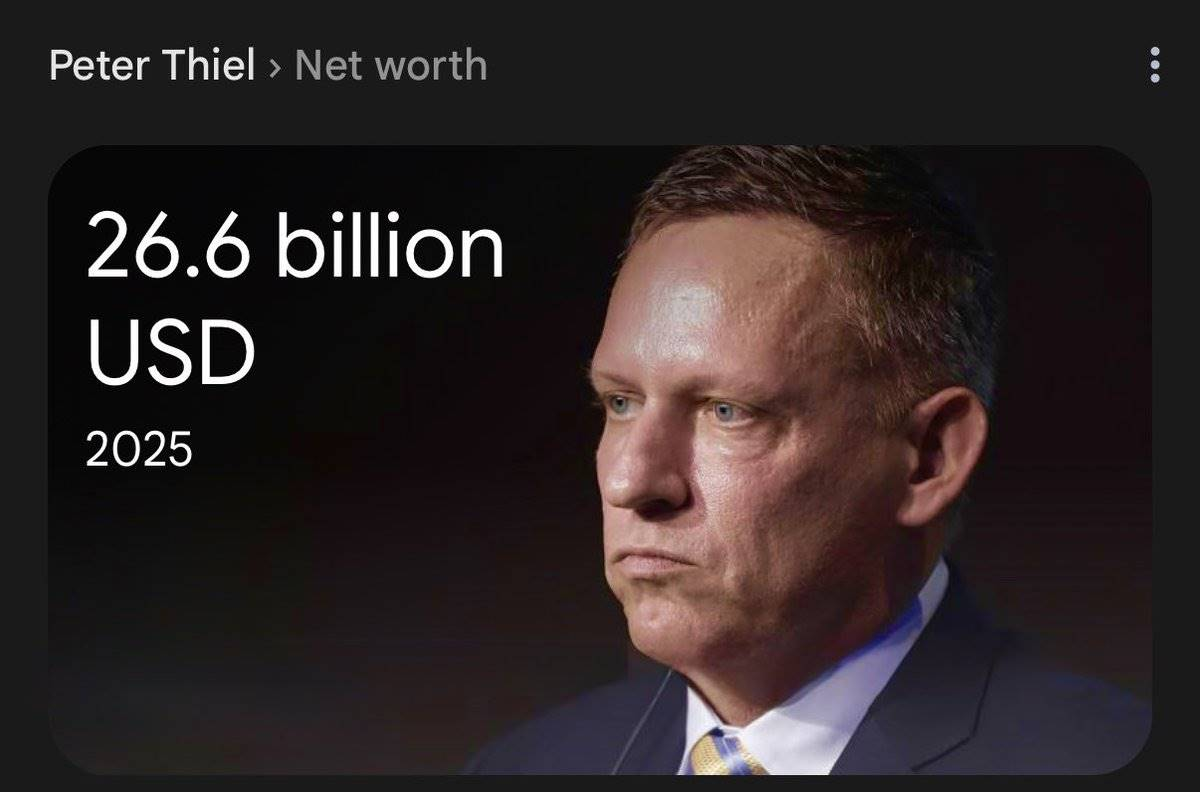
Today, 57-year-old Peter Thiel sits on a fortune worth $26.6 billion.
Palantir, the company he founded, has a market cap of $400 billion. His crypto investments have netted him $2.5 billion in profits. Behind the recently hot crypto stock BMNR and the publicly listed crypto exchange Bullish, you'll find his investments.
And J.D. Vance, whom he mentored, has now become Vice President of the United States.
Yet across Silicon Valley, he remains an outlier:
A billionaire who openly supports Trump, a tech entrepreneur who serves intelligence agencies, an investor who sells when everyone else is buying.
This is a story about how contrarian thinking creates wealth, and how patience transforms into power.
The PayPal Palace Intrigue
In December 1998, 31-year-old Peter Thiel and 23-year-old Max Levchin founded Confinity in Palo Alto. Around the same time, Elon Musk launched X.com.
Both companies were burning through cash in a fierce battle, each vying to become the king of internet payments. Three months later, the two companies merged to form PayPal, with Musk taking the CEO role.
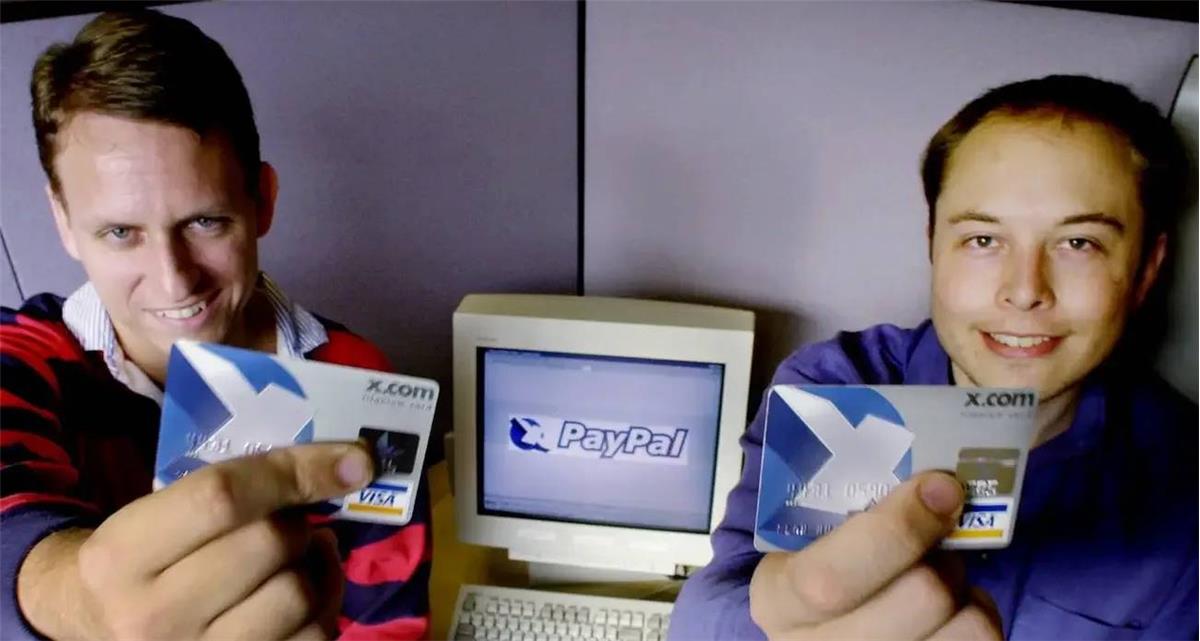
But the honeymoon lasted only six months. In September 2000, while Musk was vacationing in Australia, the company's board voted to remove him as CEO, with Thiel taking over.
The official reason for the removal was a technical disagreement—Musk wanted to migrate the system from Unix to Windows. But the deeper issue was a fundamental disagreement about the company's direction: Musk wanted to build a comprehensive financial services platform, while Thiel preferred to focus solely on payments.
This became one of Silicon Valley's most famous palace intrigues, and Thiel handled the coup with remarkable finesse. He chose to strike while Musk was away, had already secured support from Max Levchin, PayPal's head of technology at the time, and wrapped the power struggle in technical justifications.
After the leadership change, PayPal focused on the payments business, quickly turned profitable, and was sold to eBay in 2002 for $1.5 billion.
As the largest individual shareholder, Thiel cashed out $55 million from the deal. This money became his first major capital for entering the investment world.
Investing in Former Colleagues
More than twenty years later, when people discuss Silicon Valley's power structure, they can't ignore one fact: many of the most influential people once worked in the same office at the same company.
And the owner of that office was Peter Thiel.
In October 2002, after eBay completed its acquisition, Thiel used his $55 million from the PayPal cash-out to establish the investment fund Founders Fund.
His first batch of investments were almost exclusively PayPal alumni, a group that would later be known as the "PayPal Mafia":
When Reid Hoffman launched LinkedIn, Thiel was the first external investor, putting in $500,000. When Chad Hurley and Steve Chen were tinkering with the video site YouTube, Thiel participated in early funding rounds. When Jeremy Stoppelman wanted to create the local review site Yelp, Thiel provided the first seed money...
Most intriguingly was his relationship with Musk. After the 2000 "coup," the two had seemingly gone their separate ways.
But in 2008, when SpaceX was on the brink of bankruptcy and a fourth launch failure could have meant the end of the company, Founders Fund led a $20 million investment round. This money kept SpaceX alive until it secured NASA contracts.
Investing in his former colleagues' ventures proved highly successful for Founders Fund. YouTube was acquired by Google for $1.65 billion, LinkedIn reached a peak market cap of over $26 billion, and SpaceX is now valued at over $200 billion.
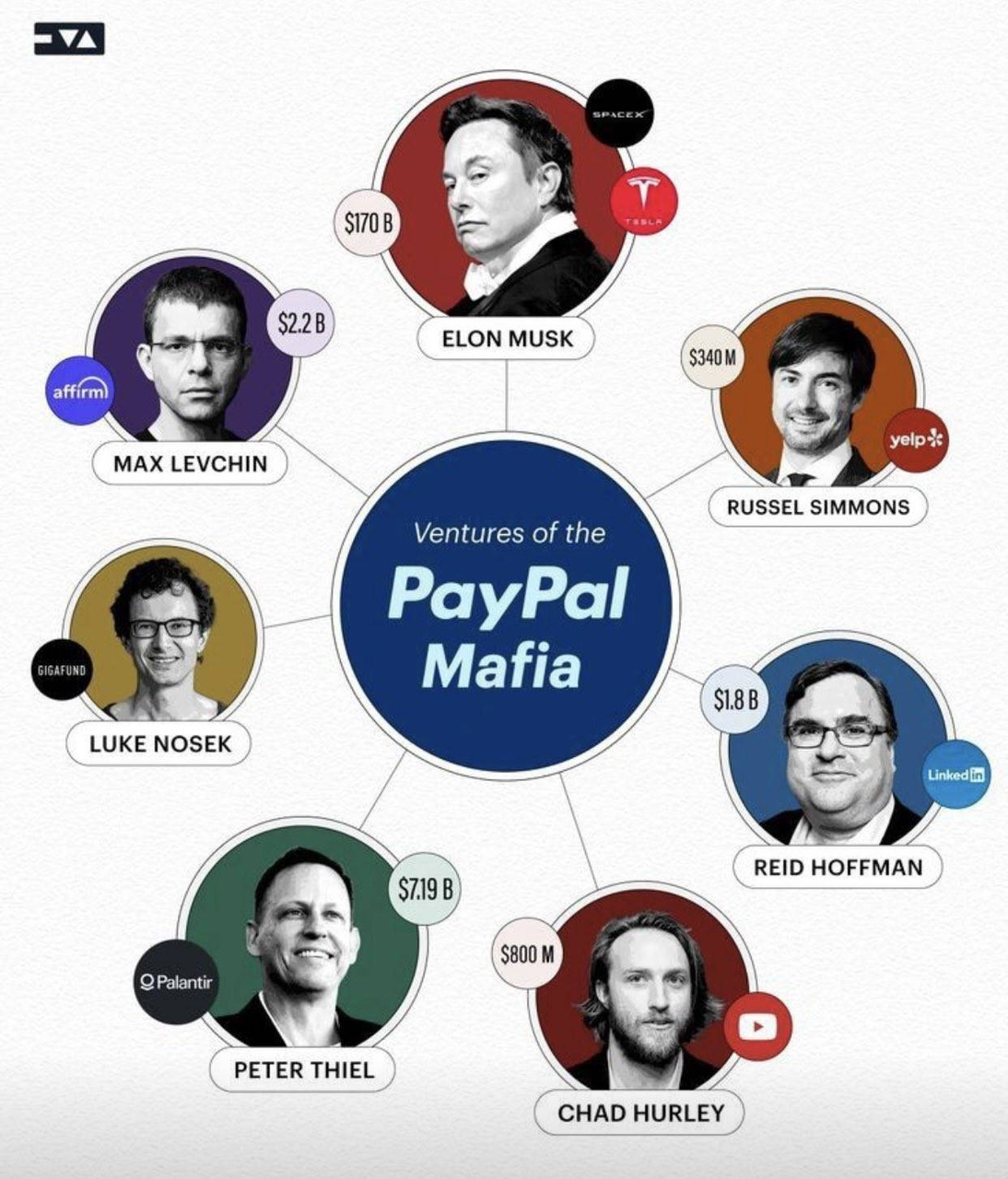
But what Thiel truly cared about seemed to be more than money—the "PayPal Mafia" gradually controlled half of Silicon Valley.
Reid Hoffman became Silicon Valley's "super-connector," with virtually every entrepreneur needing to go through him for connections. David Sacks transformed from entrepreneur to podcast host, with his All-In podcast shaping tech industry discourse, and he himself becoming the White House's crypto czar. Musk needs no introduction—from Tesla to SpaceX to X, he has virtually defined this era's technological ambitions.
What's even more remarkable is that this network maintains a loyalty that transcends business.
In 2016, when Thiel was ostracized by all of Silicon Valley for supporting Trump, PayPal Mafia members remained silent. They might not have agreed with his choice, but no one kicked him while he was down.
By 2024, when Thiel was pushing J.D. Vance's candidacy, David Sacks not only donated money but publicly endorsed him on his podcast.
Every investment Peter Thiel makes adds another node to his power network, and every successful investment exit makes that network even more solid.
Betting on Facebook, Selling Upon IPO
In the summer of 2004, 20-year-old Harvard dropout Mark Zuckerberg also approached Thiel.
At the time, Facebook had just surpassed 1 million users. The social networking space was already crowded, with Friendster having 7 million users and MySpace having 5 million users.
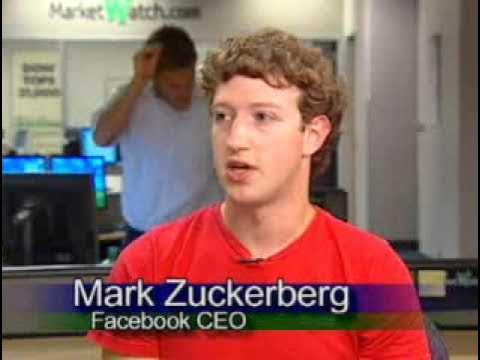
Mainstream Silicon Valley investors weren't optimistic about Facebook, but Thiel asked Zuckerberg one question:
"What's different about Facebook and MySpace?"
"On Facebook, you have to use your real name," Zuckerberg replied.
It was this seemingly simple difference that led Thiel to make his decision. He later wrote in his book "Zero to One": real identity means trust, trust means genuine social relationships, not virtual follower counts.
In September 2004, Thiel personally invested $500,000 in Facebook, acquiring a 10.2% stake. The terms of this investment were surprisingly simple—no board seat requirements, no liquidation preferences, not even anti-dilution provisions.
The subsequent story proved his judgment correct. In 2005, when Accel Partners invested at a $127 million valuation, other VCs realized what they had missed. By 2007, when Microsoft invested at a $15 billion valuation, Facebook had become a phenomenon.
In May 2012, Facebook went public with an opening price of $38. Most early investors chose to hold, but Thiel sold 16.8 million shares on IPO day, cashing out approximately $640 million. Over the following months, he continued to reduce his holdings, ultimately turning his initial $500,000 Facebook investment into over $1 billion in profit—a return of more than 2,000x.
Facebook's stock price did later rise to over $300, suggesting Thiel didn't maximize returns on this investment. But just two years after Thiel's cash-out, in 2014, Bitcoin's price had fallen to $400.
On one side was a star stock everyone was chasing, on the other was an emerging market everyone was panicking about. Once again, Thiel chose the latter.
Buying the Dip and Selling the Peak
In 2014, Bitcoin was priced at $400, having just crawled out of the rubble of Mt. Gox's collapse.
The entire crypto market cap was less than $5 billion. At this moment, Peter Thiel's Founders Fund quietly bought $15-20 million worth of Bitcoin at an average price below $500. This investment was so small it didn't even appear in the fund's quarterly reports.
From 2014 to 2022, Founders Fund didn't sell a single Bitcoin, even adding to their position twice during 2017 and 2020.
In March 2022, when Bitcoin was still at the high of $42,000, Founders Fund suddenly liquidated their entire position.
According to later reports by the Financial Times, this cash-out netted $1.8 billion. Two months later, Terra/Luna collapsed, and the crypto market entered its most brutal bear market in history. By year-end, Bitcoin had fallen to $15,500.
Interestingly, just in April—after this precise exit at the top—Thiel delivered a passionate speech at the Miami Bitcoin Conference, calling Bitcoin "the future of financial freedom." He even created an "enemies list," dubbing Buffett the "Socratic grandpa from Omaha" for not supporting Bitcoin.
The believers in the audience applauded wildly, but no one knew that this "evangelist" had just completed the largest crypto asset reduction in history.
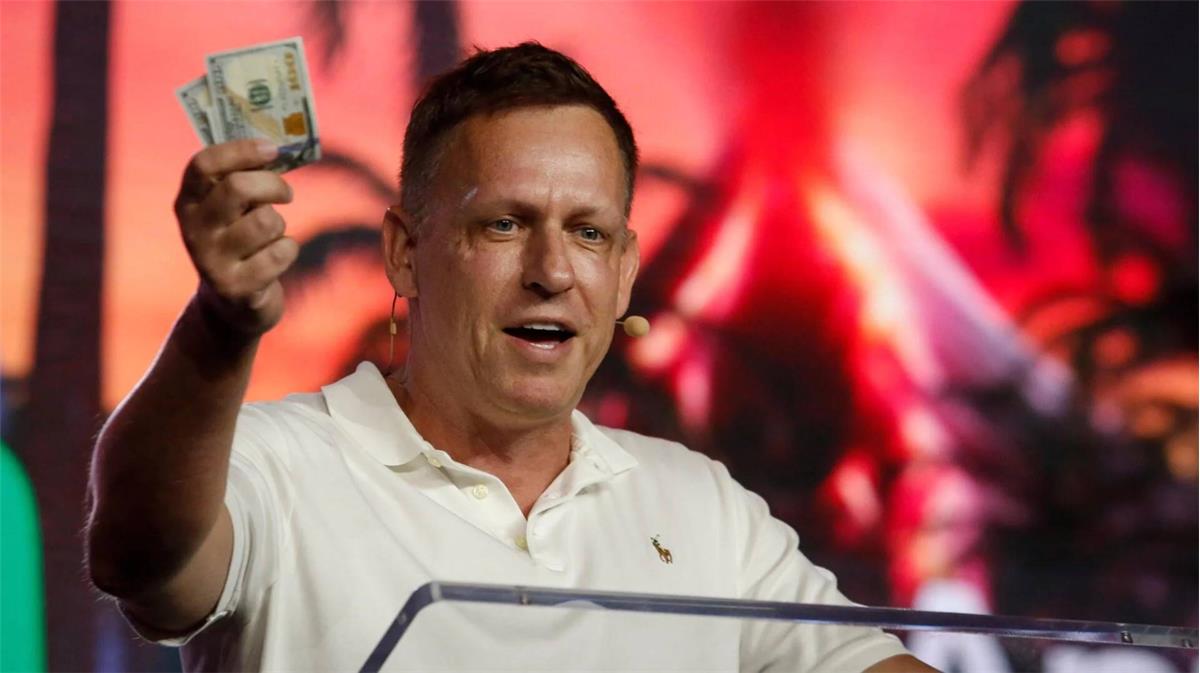
But Peter Thiel is more than just a shrewd crypto trader. While buying and selling Bitcoin, he was systematically investing in the entire crypto ecosystem:
-
Trading Infrastructure: In 2018, Founders Fund led the investment in Tagomi Systems, a company providing crypto trading services for institutional investors. Tagomi solved trading slippage issues by aggregating liquidity from multiple exchanges. In 2020, Coinbase acquired Tagomi for $150 million. In 2021, Thiel personally invested in Bullish, an institutional-grade crypto exchange operated by Block.one. What made Bullish special was its pursuit of compliance from the start, obtaining licenses in multiple jurisdictions. In July 2025, Bullish officially filed for IPO with a valuation exceeding $9 billion.
-
Lending & DeFi: Valar Ventures (Thiel's other fund) invested in BlockFi in 2019, once one of the largest crypto lending platforms; however, BlockFi ultimately went bankrupt in 2022. In 2023, during the market's lowest point, Founders Fund invested in Ondo Finance in the then-ignored RWA (Real World Assets) sector, which by 2025 had become the hottest direction in crypto.
-
Project Incubators: In October 2023, Founders Fund also invested in Alliance DAO, acquiring a minority stake and providing support to companies invested by Alliance DAO. The latter is currently one of the largest incubators in the crypto industry and an early supporter of star projects like Pump.fun.
-
European Expansion: Through his German network, Thiel invested in Bitpanda, Austria's largest crypto trading platform. It reached a valuation of $4.1 billion in 2021, becoming Europe's most valuable crypto unicorn.
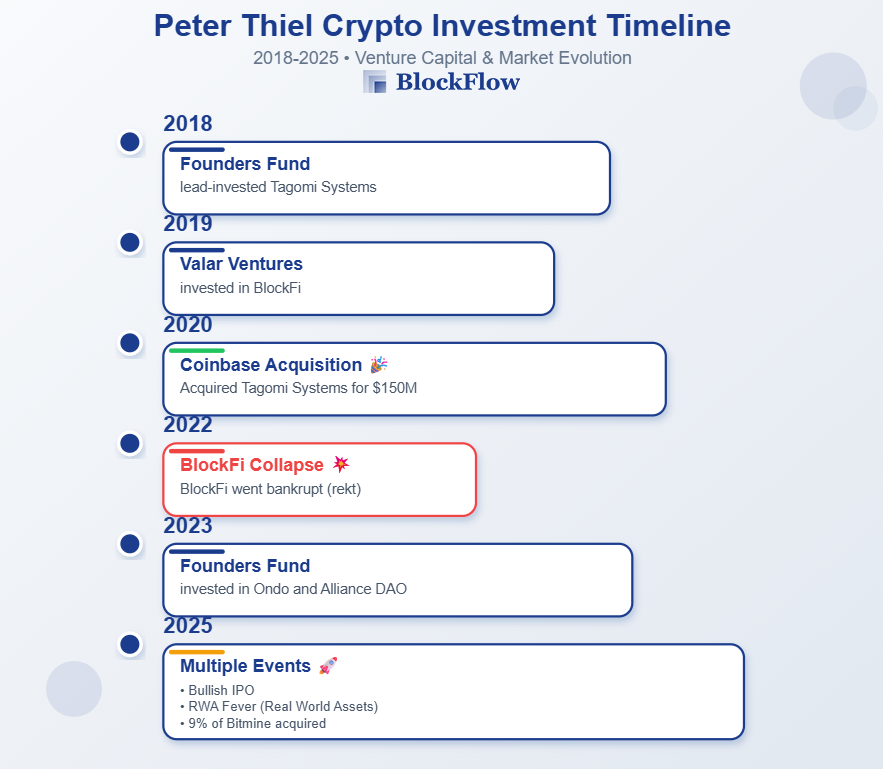
In the summer of 2023, Bitcoin lingered below $30,000 for months. The FTX bankruptcy trial was ongoing, the SEC's crackdown on the crypto industry intensified, and mainstream media was filled with narratives of "crypto is dead."
At the moment when everyone was fleeing, Founders Fund returned.
According to a Reuters report in February 2024, the fund bought $200 million worth of Bitcoin and Ethereum in batches from late summer to early fall 2023, split equally between the two.
Time once again proved Thiel's judgment correct.
In January 2024, the SEC approved Bitcoin spot ETFs. Within months, over $50 billion in institutional funds poured in. By August 2025, Bitcoin broke through $117,000, and Ethereum exceeded $4,000. Founders Fund's $200 million investment showed paper profits exceeding 100%.
On July 16 this year, Bitmine announced that Peter Thiel's Founders Fund had purchased a 9.1% stake in the company.
Looking back at every node of Peter Thiel's entry into crypto—selling at peaks, equity investments, and sector positioning—most were timed correctly. In public, he was Bitcoin's evangelist; in actual operations, he was an executor of contrarian thinking.
As of August 2025, according to various estimates, Thiel has accumulated over $2.5 billion in profits through crypto: $1.8 billion from the 2022 peak exit, $500 million from early project investment exits, and $200 million from the 2023 bottom-buying.
This doesn't even include his holdings in Bullish shares, Bitpanda equity, and the latest BMNR investment.
Binding to America's National Fortune
Beyond investing in the PayPal Mafia, Thiel actually founded his own company after leaving PayPal in 2003 --- Palantir, a firm that serves government and military clients by developing intelligence systems for them.
What was Silicon Valley's mainstream focus at the time? Social networks, e-commerce, search engines. Yet Thiel chose to do data analysis for the CIA.
Palantir's first $2 million in startup funding came from the CIA's venture capital arm In-Q-Tel, with Thiel himself investing $30 million. The company's name comes from the "palantír" or "seeing-stones" in The Lord of the Rings — magical orbs that could perceive all information.
For the next seven years, there was virtually no public coverage. It wasn't until the Afghanistan War in 2010 and the killing of Bin Laden in 2011 that media discovered Palantir's intelligence analysis system had played a crucial role in these operations.
The company Thiel created had a client list that read like a spy thriller cast: CIA, FBI, NSA, Pentagon. But in Silicon Valley, which champions freedom, this made Palantir a target. Protesters demonstrated outside their offices, calling it an "evil company." Employee recruitment became difficult, and commercialization efforts repeatedly hit walls.
When it went public in 2020, Wall Street wasn't impressed. Years of never turning a profit, over-reliance on government contracts. The stock price dropped from $10 to as low as $5.92.
After ChatGPT exploded in 2023, Palantir launched its AIP platform, combining 20 years of intelligence analysis capabilities with popular large language models to serve more enterprises' internal process management. When Google withdrew from the Pentagon's AI project due to employee protests, Palantir stepped in.
Subsequently, military contracts began surging: in 2024, the U.S. Army signed a 10-year, $10 billion deal with them; in April 2025, NATO officially procured their Maven Smart System.
Meanwhile, the company's stock price soared from $6 in early 2023 to $187 in August 2025, bringing total market cap to $440 billion — already exceeding the combined market value of America's three traditional defense giants.
(Reference reading: 20x in 5 Years: The Birth of America's Most Expensive National Fortune Stock)
Palantir's true value isn't in its stock price. This company's systems connect to every node of American power: Homeland Security uses it to track immigrants, the SEC uses it to investigate insider trading, the IRS uses it for tax investigations.
When Thiel-backed J.D. Vance became Vice President, Palantir's government contracts noticeably increased. Thiel influences policy-making through Vance, participates in power operations through Palantir, and controls Silicon Valley through the PayPal Mafia. The synergistic effects of this power network are just beginning to emerge.
From the initial $30 million investment in 2003 to today's $440 billion market cap, for Thiel, Palantir has brought not just wealth, but a pass to the core of Washington power.
Twenty years ago, choosing to work for the CIA seemed like Silicon Valley's most unthinkable choice. Looking back today, this might have been Thiel's shrewdest move.
Silicon Valley Kingmaker: A Decade's Patience Pays Off
In August 2025, sitting in America's second-highest seat of power is someone who, just four years earlier, was calling Trump "Hitler."
J.D. Vance, 39 years old, one of the youngest Vice Presidents in American history.
From Yale Law School to Silicon Valley, from bestselling author to Senator, and then to Vice President — behind this incredible trajectory, Peter Thiel has been the driving force all along.
In 2011, Peter Thiel was invited to speak at Yale Law School, where he argued that elite institutions focus too much on peer competition, with students blindly chasing their way up the prestige ladder. Sitting in the audience, J.D. Vance was deeply moved and got to know Thiel.
Years later, he would describe this speech as "the most important moment at Yale," a lecture that changed the course of Vance's life.
After graduating from Yale in 2013, he joined the top-tier law firm Sidley Austin as expected. But just two years later, he quit. His next stop was a Silicon Valley biotech startup called Circuit Therapeutics, where he took the role of Chief Operating Officer.
For a lawyer with no tech background, this was quite a leap. Circuit's CEO Frederic Moll later admitted to the media that hiring Vance was partly due to Peter Thiel's recommendation.
Thiel's venture capital fund had previously invested in Moll's earlier company — this was Silicon Valley-style favor trading. In 2016, Vance's career took another turn. He joined Peter Thiel's venture capital fund Mithril Capital as a partner.
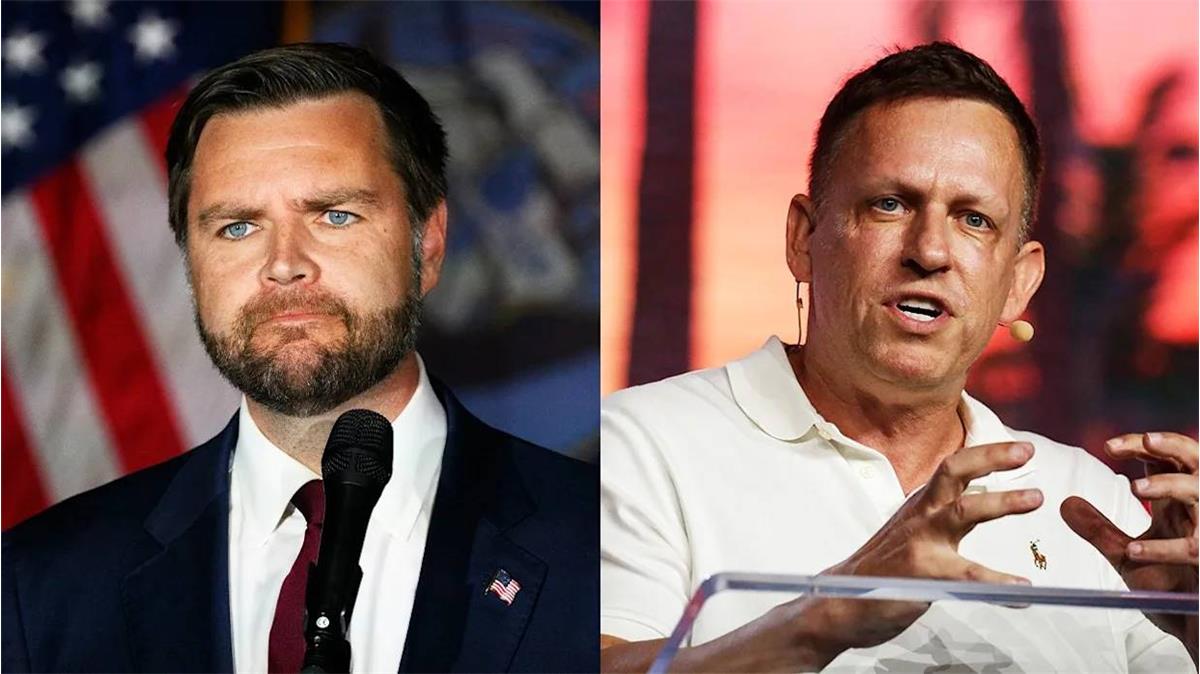
In July of that same year, his memoir "Hillbilly Elegy" was published, quickly climbing to the top of The New York Times bestseller list. Suddenly, this unknown venture capital partner became a nationally recognized author and cultural commentator.
According to a 2024 Wall Street Journal report, former colleagues at Mithril recalled that during Vance's year there, he was rarely seen in the office; he spent most of his time traveling the country for book signings, speeches, and interviews.
But this seemed to be exactly what Thiel wanted — not to cultivate an investment manager, but to create a public intellectual.
In March 2017, Vance left Mithril fund, but he didn't leave Peter Thiel's orbit. He first joined Revolution fund, founded by AOL's Steve Case, then established his own fund, Narya Capital, in 2019.
Narya's investor list tells the whole story: led by Peter Thiel himself, with follow-on investments from a16z founder Marc Andreessen and former Google CEO Eric Schmidt.
In 2021, Vance announced his run for Ohio Senator. According to Federal Election Commission public records, Thiel donated $15 million to Protect Ohio Values, the super PAC supporting Vance. This was the largest single donation to a Senate race in history.
It wasn't just Peter Thiel. His friend David Sacks donated $1 million, with other Silicon Valley figures following suit. Ultimately, tech industry donations made up the majority of Vance's campaign funding. An Ohio Senate seat had become an investment target for Silicon Valley capital.
From being elected Senator in November 2022 to being nominated as Vice Presidential candidate in July 2024, Vance took less than two years. This speed is extremely rare in American political history.
Multiple media outlets reported that during Trump's vice presidential selection process, voices from Silicon Valley were unusually unified. Not just Peter Thiel, but also Elon Musk, David Sacks, and others were all recommending Vance.
These tech moguls saw not just a Vice President, but their spokesperson in Washington.
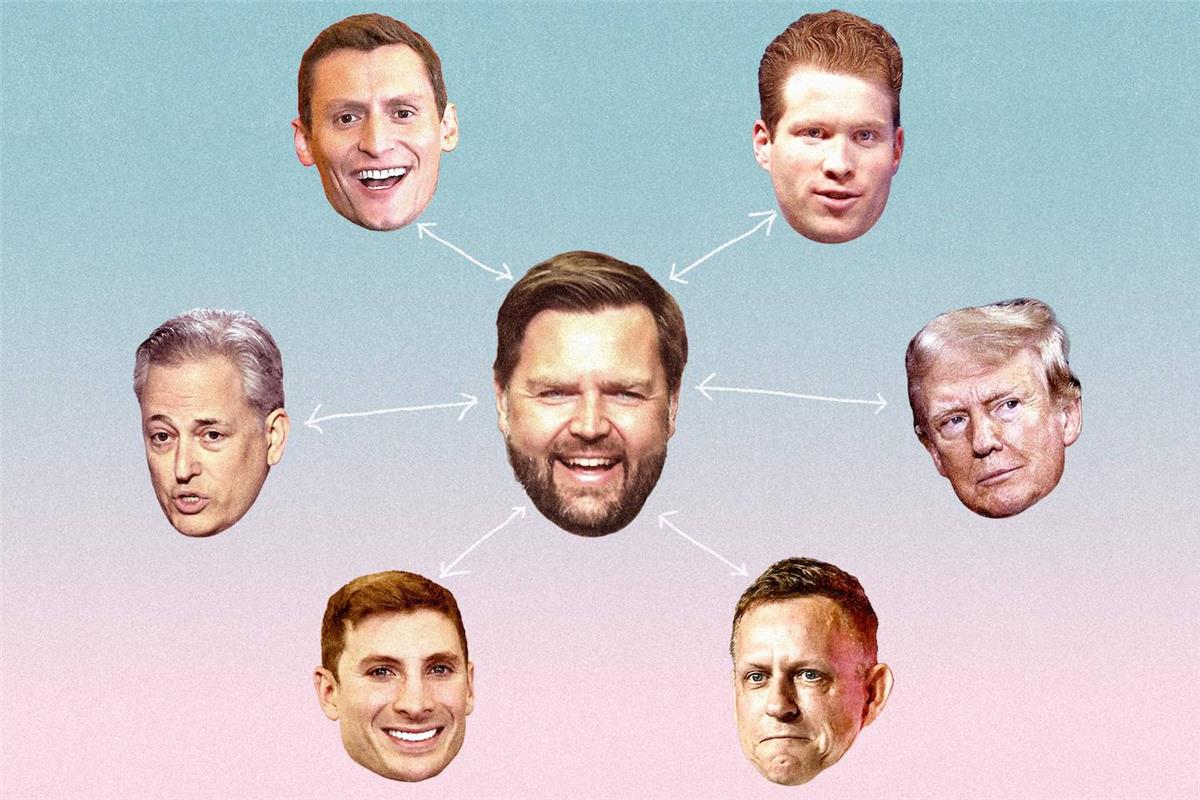
JD Vance's Silicon Valley Network | Source: The Washington Post
Clockwise from top left: Blake Masters, Joe Lonsdale, Peter Thiel, Jacob Helberg, David Sacks
After Vance took office, policies began to shift.
The federal government increased its procurement of AI and data analytics tools, with Peter Thiel's Palantir becoming a major beneficiary. Meanwhile, the U.S. government's regulatory stance toward crypto noticeably softened.
These changes perhaps cannot be directly attributed to Thiel's influence, but the timing is thought-provoking.
The relationship between Thiel and Vance may represent a new model of political influence. Unlike traditional lobbying or political donations, this is more like "venture capital-style cultivation": identifying promising talent early, providing financial and resource support, helping them gain power, and then achieving long-term influence through ideological alignment.
At 39, Vance potentially has decades of political career ahead. This means Thiel's influence projection extends far beyond ordinary election cycles.
"What important truth do you believe that very few people agree with you on?"
Perhaps for Peter Thiel, the answer has always been simple:
Power never belongs to those in the spotlight.
 PEPE0.00 0.42%
PEPE0.00 0.42%
 TON1.57 2.47%
TON1.57 2.47%
 BNB840.44 -0.20%
BNB840.44 -0.20%
 SOL122.99 -0.95%
SOL122.99 -0.95%
 XRP1.85 -1.54%
XRP1.85 -1.54%
 DOGE0.12 -2.51%
DOGE0.12 -2.51%
 TRX0.28 0.64%
TRX0.28 0.64%
 ETH2929.62 -1.72%
ETH2929.62 -1.72%
 BTC87416.71 -1.69%
BTC87416.71 -1.69%
 SUI1.41 0.44%
SUI1.41 0.44%














